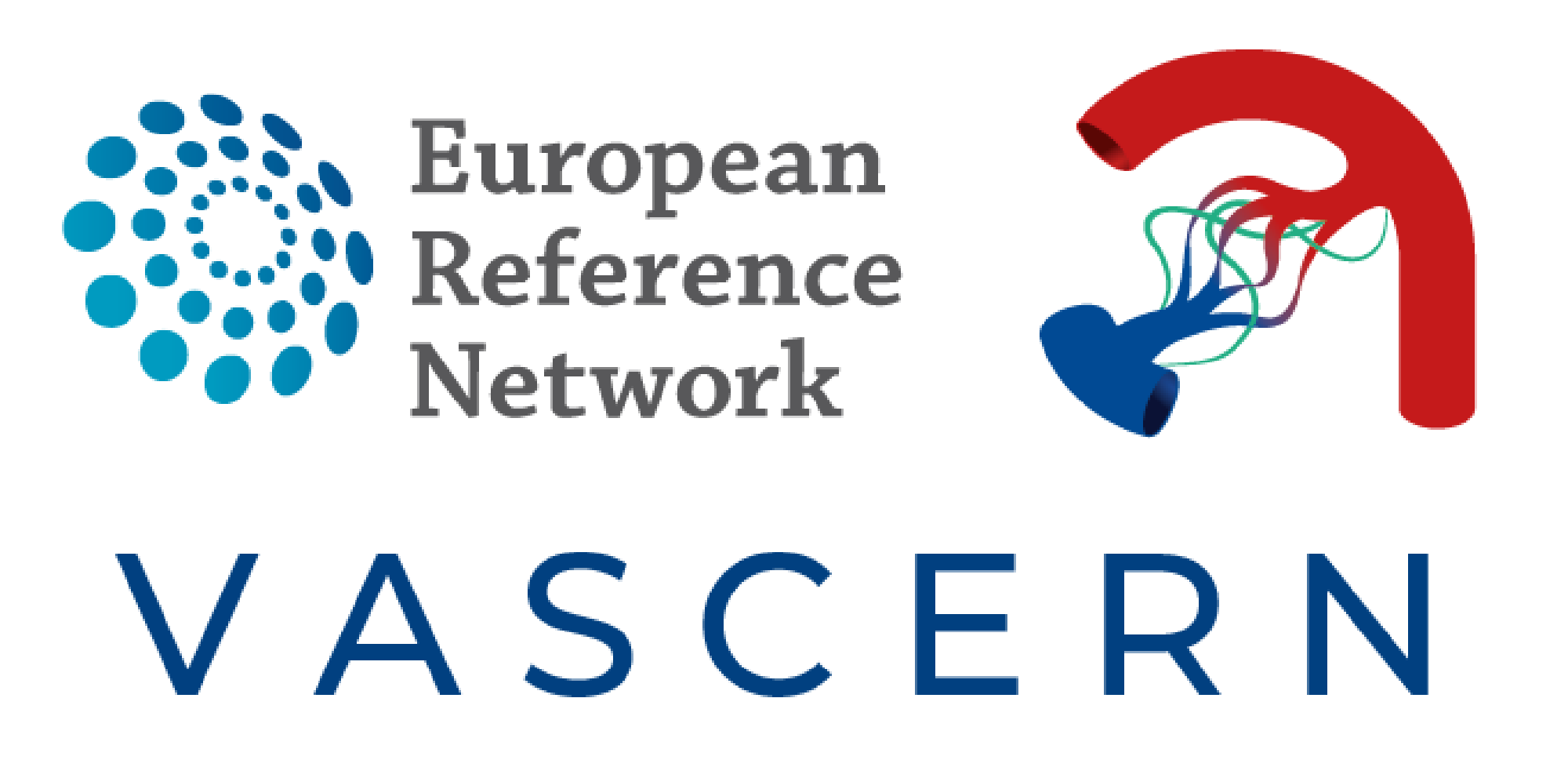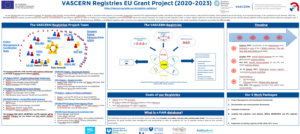Registry
To better understand rare diseases, and in this case vascular diseases, VASCERN has developed six specific European rare vascular disease registries since 2019, which share some variables (common data elements or CDEs). This will allow us to pool patient data from all over Europe. All of our hospital members are taking part in this effort.
The VASCERN registries have been transformed into FAIR registries by implementing the FAIR guiding principles to optimise the re-use of the data collected and to make them more accessible for research purposes.
The registry will be interoperable with all other rare disease registries that are currently being set up by the other ERNs via the Common Data Elements (CDEs).
To learn more about this project take a look at our informational poster below.
Goals
The registries have several goals:
- To gain insight into the incidence of the different diseases belonging to the domain of rare vascular diseases.
- To enable research for new diagnosis (recognition of new entities), natural history (outcome or prognosis), evaluate the effect of different treatment strategies that are applied in different countries and the effect of different treatments.
- To be able to share data with other registries to obtain even bigger data and thus allow better analysis.
The ultimate goal is to improve care and develop new recommendations. With this effort we try to maximize the impact of the registries on the life of patients.
Structure
There are six registries within VASCERN one for each working group. They differ in structure and in the elements they collect.
For more information on the different registries click one of the names below.
- HHT: a registry on Hereditary Hemorrhagic Telangiectasia.
- HTAD: a registry on rare genetic aortic diseases. Specifically on Marfan syndrome, and related diseases.
- MSA: a registry on vascular Ehlers-Danlos Syndrome (vEDS)
- NEUROVASC: a registry on rare cerebrovascular anomalies. Specifically on CADASIL and Moyamoya Angiopathy.
- PPL: a registry on Primary and Paediatric Lymphedema.
- VASCA: a registry on rare vascular anomalies
However, each group collects the Common Data Elements (CDE) that have been selected by the European Union (link to CDE). In this way the six registries (and all other ERN registries) are interoperable. The goal of that is, that we can query across all six registries at once and even across registries from different ERNs. This again enables us to do better epidemiological studies. Below you will find more information on these elements.
What we all collect
The number of data elements will expand gradually, and differ between registries, according to the need specific from the diseases studied. However, we always collect 16 elements, that have been chosen in cooperation with the EU and are known as the Common Data Elements (CDEs). All ERNs collect these elements: Pseudonym, Date of inclusion, Date of birth, Age of inclusion, Sex, Patient’s Status, Date of death, First contact with specialised center, Moment of onset, Date of onset, Moment of diagnosis, Date of diagnosis, Rare disease’s diagnosis (Orpha / ISSVA), Genetic diagnosis (HGNC, HGVS, OMIM), Undiagnosed case (Phenotype (HPO)), Biological sample.
Data Collection Process
Before we can enter data in the registry, patients have to sign informed consent or there has to be another legal basis. No identifying data is entered in the registry. However, the local investigator is able to identify the patient if necessary (pseudonymisation), for example is the patient wants to withdraw his data.
All our participating centres are entering data in the registry. Conventions have been signed between all parties to ensure good and clear collaboration.
Security and Privacy
The different registries have different solutions / architectures for the setup of the registries. Whatever the solution, security is a driving factor.
All our registries are in accordance with the EU data protection legislation GDPR. Patient rights are respected. The European, national and local requirements are respected. All our data is pseudonymised before being stored. No directly identifiable data will be stored.
For the collaboration with the company that stores the data (Data Processor) we have a Data processing Agreement that defines the roles and responsibilities for the concerned parties. To make sure our processes are well defined and leave no security risks, we perform a Data Processing Impact Assessment (DPIA).
The patients participating in our registries always have the possibility to withdraw their consent and have their data removed from the registry. All our data storage partners have to be certified (ISO-27001).
For more information on data security: vascern_registry@vascern.eu
If you wish to withdraw your consent, please contact your treating physician.
Should you have complaints, please send them to one of the following addresses:
- HTAD: htad_registry_info@vascern.eu
- HHT: hht_registry_info@vascern.eu
- MSA: msa_registry_info@vascern.eu
- NEUROVASC: neurovasc_registry_info@vascern.eu
- PPL: ppl_registry_info@vascern.eu
- VASCA: vasca_registry_info@vascern.eu
Data Ownership
The data being will always stay property of the patient, but by signing an informed consent or otherwise participating in the registries, the registry owners will get custody of the data.
Results
So far no research has been done with the registry data. When results are available, we will publish them here when research has been done on the overall VASCERN data. The results of research preformed on working group specific data will be shared on the page for that working group.
Apply for data-use
VASCERN is the ERN for Rare Multisystemic Vascular Diseases. In our six registries we collect valuable data on all diseases related to our expertise. For more details on the elements collected, please visit the specific site for each WG. If you are interested in our data for your research, you can apply for use by filling out this form here.
After you have filled in this doc you can send it to the Data Access Committee (DAC) will review your application. This committee (DAC) is responsible for the scientific exploitation of the registry. The DAC guarantees the compliance with ethical rules (but is not an ethical review board), advises on useful data elements and follow.
The minimal requirements for getting access are:
- You have to comply to GDPR regulations
- Data will be given in an anonymous way. You are not allowed to (try) to re-identify the subjects.
Our project “VASCERN Registries” is financed under the 3rd EU Health Programme and will continue to be financed in 2023 by the EU4Health programme. The grant is managed by our coordination team based in Hospital Bichat-Claude Bernard, France. The VASCERN Registries are specifically coordinated by the Radboud University Medical Center in the Netherlands.




